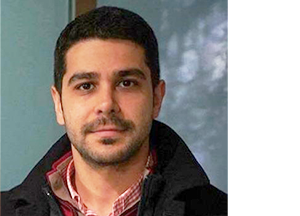
Moein Seyfouri, UNSW
In ferroics, emergent phenomena arise from complex interactions among various degrees of freedom that can be used as tuning knobs for physical responses. In particular, strain-polarization coupling in ferroelectrics enables the formation of exotic polarization textures, such as topologically protected states.
Notably, due to high local crystalline anisotropy, such topological textures are limited to a few nanometres and are highly responsive to external stimuli. Hence, engineering these topological objects to demonstrate emergent behaviour to specific external stimuli would be a significant step toward future high-density and low-energy nanoelectronics.
We recently succeeded in stabilizing the complex topological phase in a type-I multiferroic system, where continuous polarization curling is achieved by judicious control of dipolar coupling and lattice strain at the interface [1] . Our experimental observation of polar topological structure in epitaxial BiFeO3 /SrTiO3 superlattice on LaAlO3 (001) substrate is well-corroborated by first-principles effective Hamiltonian calculation and phase-field simulations, which predict the formation of these non-trivial topologies originated from the competing electrical and mechanical boundary conditions.
We also find that such topologies can transition to other non-trivial configurations by tuning the boundary conditions at room temperature. Piezoresponse force microscopy (PFM) results reveal an intricate transformation from mono-domain phase to nanometre-sized polar textures and eventually to labyrinthine domains upon increasing the thickness of bismuth ferrite layer. Tuning the thickness of the ferroelectric layer affects the strength of the residual depolarization field; this consequently leads to a range of the abovementioned topological defect structures.
Our work demonstrates that various topological features can be engineered in bismuth ferrite superlattice structures, depending on the interplay between strain and the amount of screening of surface charges. This controlled design of nanoscale ferroic topologies opens possibilities of engineering emergent transitions.
About the presenter
Moein Seyfouri is a Research Fellow in CI Nagy Valanoor‘s group. He is designing multiferroic oxide heterostructures with topological textures. This research sits at the intersection of material science and condensed matter physics. In particular, Moein utilises advanced X-ray diffraction and scanning probe microscopy techniques to characterise novel topological oxides.
This work fits the FLEET Research Theme 1, Topological Materials.
